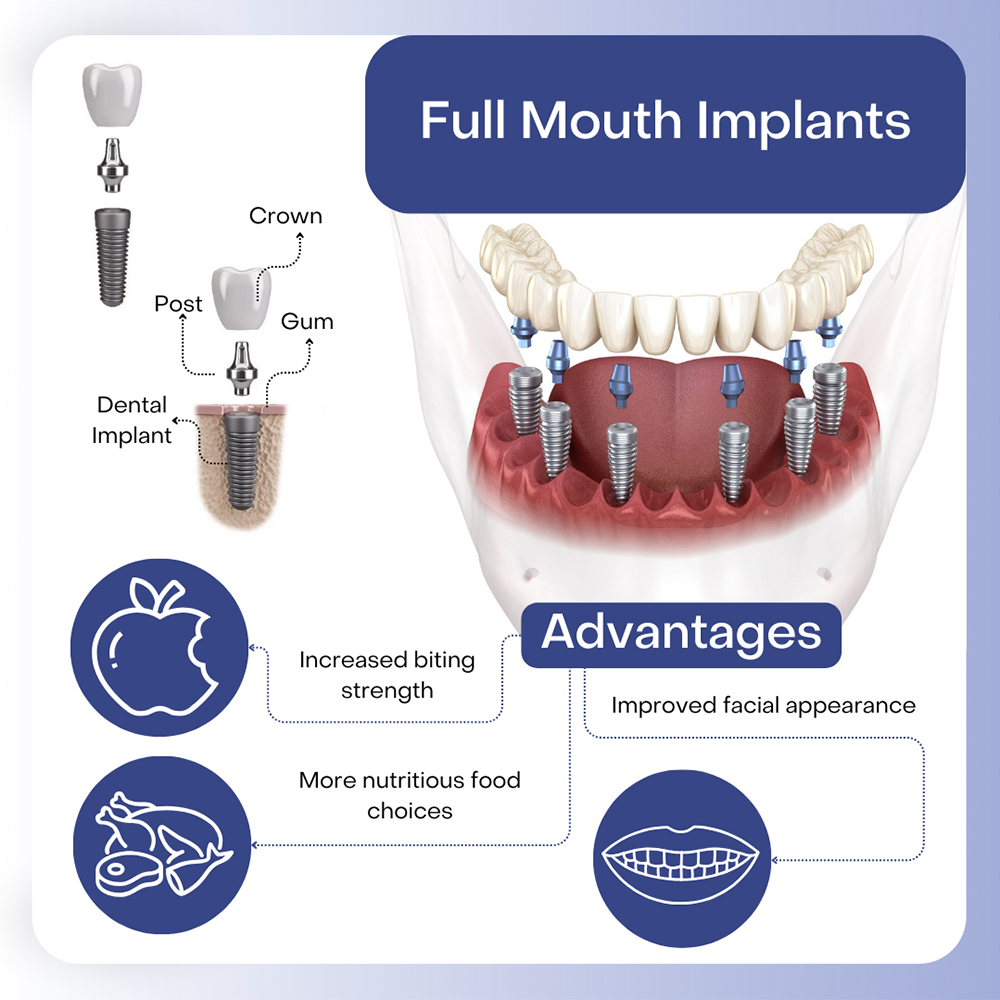Little Known Facts About Dental Sense.
Little Known Facts About Dental Sense.
Blog Article
What Does Dental Sense Mean?
Table of ContentsIndicators on Dental Sense You Need To KnowFacts About Dental Sense UncoveredThe Main Principles Of Dental Sense Dental Sense Things To Know Before You Buy
are medical gadgets surgically implanted into the jaw to restore a person's capability to chew or their appearance. They offer support for artificial (fake) teeth, such as crowns, bridges, or dentures. When a tooth is lost due to injury or condition, an individual can experience difficulties such as quick bone loss, malfunctioning speech, or adjustments to eating patterns that cause pain.Oral dental implant systems consist of a dental implant body and oral implant joint and may also consist of a joint fixation screw. Kids dental. The dental implant body is operatively placed in the jawbone instead of the tooth's root. The dental implant abutment is generally connected to the implant body by the joint fixation screw and prolongs through gum tissues right into the mouth to support the affixed fabricated teeth
(http://peterjackson.mee.nu/do_you_ever_have_a_dream#c2310)Structure of The Dental Implant System choosing oral implants, talk with your oral copyright concerning the possible advantages and dangers, and whether you are a candidate for the procedure. Things to consider: Your general health and wellness is an important element in determining whether you are a great prospect for dental implants, exactly how long it will certainly require to recover, and how long the dental implant might remain in place.
Cigarette smoking might influence the recovery process and reduce the long-lasting success of the dental implant. The recovery procedure for the implant body may take a number of months or longer, during which time you commonly have a momentary abutment in area of the tooth. the oral implant treatment: Carefully comply with the dental health directions provided to you by your oral company.
Unknown Facts About Dental Sense
Implant failing can lead to the demand for one more surgery to deal with or change the dental implant system. Brings back the ability to chew Brings back cosmetic look Aids maintain the jawbone from diminishing due to bone loss Maintains the health and wellness of the bordering bone and periodontals Assists keep adjacent (close-by) teeth stable Boosts quality of life Damage to surrounding all-natural teeth during dental implant positioning Injury to the surrounding cells throughout surgical procedure, such as sinus perforation Injury throughout surgical procedure (for instance, fracture of surrounding jawbone) Insufficient feature, such as seeming like the teeth do not attack together generally A sensation that the tooth hangs or twisting in location resulting from a joint screw loosening Implant body failure (looseness of the implant body) due to systemic infection, which may be most likely in individuals with unrestrained diabetes due to neighborhood infection in bone and periodontals sustaining the implant body due to delayed recovery, which might be more probable in individuals who smoke Difficulty cleaning the gum tissues around the implant, leading to poor oral health Neglected gum illness Post-surgical pins and needles as a result of nerve impingement or damage Constantly alert healthcare companies and imaging service technicians that you have oral implants prior to any type of magnetic vibration imaging (MRI) or x-ray treatments.
FDA is not aware of any adverse occasions reported for MRI or x-ray procedures with oral implants. Oral implants systems are generally constructed from products that comply with international consensus requirements of the International Company for Standardization (ISO) or ASTM International. These criteria have information of what makes a secure product.

An oral implant is a framework that changes a missing tooth. With screw-like tools, the doctor inserts an implant right into the jawbone, and it serves as a support for an artificial tooth, called a crown. A tool called a joint attaches the man-made tooth to the dental implant. The crown is personalized to fit the individual's mouth and match the shade of their teeth.
The Only Guide for Dental Sense
Some people are not qualified for oral implant surgical procedure. It is for oral surgeons to operate people with: intense illnessuncontrollable metabolic diseasebone or soft tissue condition or infectionIf these issues are settled, a person can have the surgery. In, dental specialists avoid operating on see people with: If individuals with any of the above go through oral implant surgery, there is a higher danger of the implant failing.

Dental implant surgery is a customized procedure. It's not the same for every person. The following provides a general review of what you can expect your dental professional, oral surgeon, periodontist or prosthodontist to do: Position the dental implant surgically. Offer you time to recover. Attach the post and last crown, bridge or denture.
Next, your specialist will very carefully position the oral implant into your jaw. Your surgeon will rearrange your gum tissues and shut the laceration with stitches. If your implant is near the front of your mouth, your dental practitioner will certainly make a short-lived tooth for you to wear till you heal. By doing this, you won't have a void in your smile while you recuperate.
Everything about Dental Sense
During the recovery stage, your jawbone should fuse to the dental implant. This process can take anywhere from 3 to 9 months.
When your dental implant heals, your dental expert can attach the abutment (tiny connector message) and your last reconstruction (crown, bridge or denture). This typically takes regarding one hour to complete and may need a 2nd small surgery. You should not feel any kind of discomfort throughout your dental implant treatment due to the fact that your copyright will make use of medication to numb your gums.
Report this page